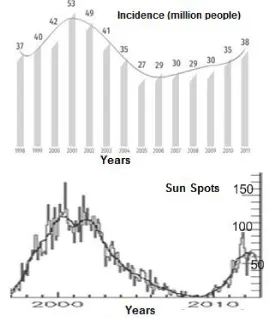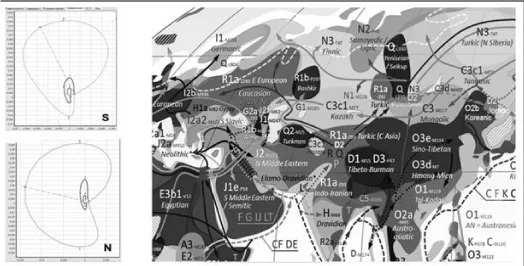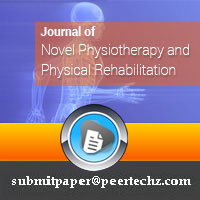Journal of Novel Physiotherapy and Physical Rehabilitation
Space weather and COVID-19 Pandemic Genogeography
Ragulskaya MV*
Cite this as
Ragulskaya MV (2020) Space weather and COVID-19 Pandemic Genogeography. J Nov Physiother Phys Rehabil 7(1): 031-032. DOI: 10.17352/2455-5487.000074Space weather and the dynamics of Solar Activity (SA) have a significant impact on biota and society. So, all influenza epidemics of the 19-21 centuries developed only at the extremes of solar activity (Table 1.)
The difference in the number of infectious diseases in Russia in the minimum and maximum of the 11-year cycle of SA is more than 25 million people (Figure 1).
As a result of long-term multi-latitude online monitoring of 2003-2015 from Yakutsk to Simferopol and Baku, simultaneous statistically significant changes in the biomedical parameters were revealed, associated with variations in solar dynamics, geomagnetic field and cosmic rays (total number of measurements is more than 500,000). 1-2 days after flare-ups on the Sun, even in healthy people, a transition of heart dynamics to a more chaotic mode of functioning was observed [1,2]. A more detailed study of the heart dynamics in the phase space showed the division of the types of phase cardio- portrait of the subjects into the “South Russian” (S) and “North Russian” (N) version with different adaptive dynamics to variations in space weather. Further research showed the affiliation of these cardiodynamics to various haplogroups. One of the significant genetic differences between haplogroups is the difference in the production of complexes of human leukocyte antibodies. It is associated with the strength of the immune response of representatives of a particular haplogroup to the virus. Additional environmental factors and the characteristics of the genetics of the population in each particular country can accelerate the development of a local epidemic, increase its severity and mortality rate. SARS-CoV-2 virus pandemic is unexpectedly difficult in prosperous European countries with a high level of medical development. Mortality by country varies by more than 15 times. To explain this fact, one must look not in the field of the laws of epidemiology. Apparently, in the development of current local epidemics, the main modulating factor is the genogeographic characteristics of the population. Genetic variations explain the differences in the strength of the immune responses of leukocyte antigens. The largest number of victims per 1 million inhabitants is recorded in the territories of Northern Italy, Spain, France, Belgium, Great Britain, and the USA. All these countries have populations with a dominant haplogroup R1b.
In the European territory of Russia, the dominant haplogroup is R1a. This haplogroup was characterized by a rapid development of the epidemic with low mortality and a large number of asymptomatic patients (Russia, Germany, Iran). We compared the dynamics of the coronavirus epidemic in Moscow and St. Petersburg. The density and age composition of the population in both cities is comparable. The quarantine measures taken by the city government were more stringent in Moscow. However, the local epidemic in St. Petersburg is developing 10 times slower. The proportion of haplogroup R1a is halved in the northern regions of Russia and St. Petersburg. Haplogroup R1a gives way to haplogroup Nc1. Differences in the genetic composition of the population can explain the significant difference in the development of the epidemic in Moscow and St. Petersburg, and its milder course in the St. Petersburg Figure 2.
Understanding the genetic and geographical features of the development of a pandemic COVID-19 contributes to the correct distribution of medical resources, assessing the severity of the disease and optimal therapy. This is important because in the conditions of a solar activity global minimum, pandemics of the 21st century will occur 2 times more often than in the 20th century.
This research partially supported by the program 17 of the Presidium of the Russian Academy of Sciences “Evolution of the organic world and planetary processes” and the Russian-Azerbaijani grant of the Russian Foundation for Basic Research Az_a_18-52-06002.
- Ragulskaya MV, Rudenchik EA, Chibisov SM, Gromozova EN (2015) Effects of Space Weather on Biomedical Parameters during the Solar Activity Cycles 23-24. Bulletin of Experimental Biology and Medicine 159: 269-272. Link: https://bit.ly/2AESaIG
- Nguyen A, David JK, Maden SK, Wood MA, Weeder BR, et al. (2020) Human leukocyte antigen susceptibility map for SARS-CoV 2. Link: https://bit.ly/3fBqhQA
Article Alerts
Subscribe to our articles alerts and stay tuned.
 This work is licensed under a Creative Commons Attribution 4.0 International License.
This work is licensed under a Creative Commons Attribution 4.0 International License.



 Save to Mendeley
Save to Mendeley
